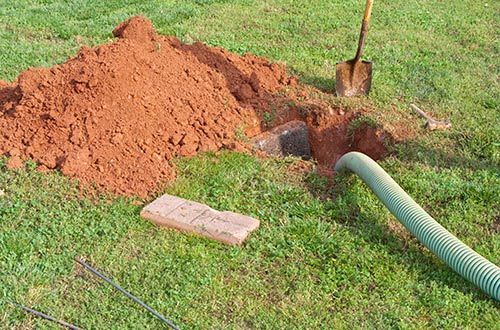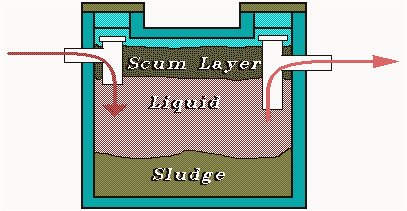The Importance of Septic System Cleaning

Septic tanks are an essential piece of the wastewater infrastructure for the United States. Where city sewer systems are too expensive and impractical to install, especially in rural areas, septic tanks are the most viable option. This helps to keep costs low for homeowners, protect the environment, and to ensure clean drinking water. However, for these septic systems to work correctly, they must be maintained and undergo routine septic tank cleanings.
Almost all septic systems have several universal components. Typically, you have one or two septic tanks followed by your secondary treatment. Such secondary treatments can include aeration, leech trenches, mounds, etc. Below is a crash course on how your septic tank works. We'd, um, suggest you be done with your lunch before you continue.
BASICS OF SEPTIC SYSTEMS
The septic tank works by separating the waste coming from the house into three distinct layers. This separation work is accomplished with retention time and gravity. As the water flows into the tank, a baffle, or inlet tee, will start the separation process by forcing the liquid into the center of the tank. The heavier waste will settle down to the bottom to form a "sludge layer." Finally, the lighter wastes, such as fats, oils, greases, and toilet paper, will float to the top forming a "scum layer." Ultimately, the middle layer that forms will be a clearer liquid, leaving through the outlet tee.

Septic Tank With Inlet and Outlet Tee’s – Credit: cseindia.org
The purpose of the outlet tee is to trap the "scum layer" and the "sludge layer" in the tank, only allowing the more transparent liquid into your secondary treatment. However, the top and bottom layers will grow over time and shorten the tank's retention time. This shorter retention time causes solids to flow through the outlet tee and damages your secondary treatment. Using large quantities of water also increases the likelihood of damage. For example, washing several loads of clothes in a single day puts additional stress on your septic system.
ROUTINE SEPTIC TANK CLEANING
Regular septic tank cleaning is vital to prevent solids from flowing to your secondary treatment. Therefore, most experts recommend that your tank be pumped every two to three years. Your technician can help make these determinations based on the number of people in the home, water usage habits, and the condition of the solids in the tank. By following the advice of these technicians, you will help extend the life of your septic system. This will protect not only your wallet but also the environment.
For more information on Pumping a Septic Tank and the costs, check out this blog in our news section!
